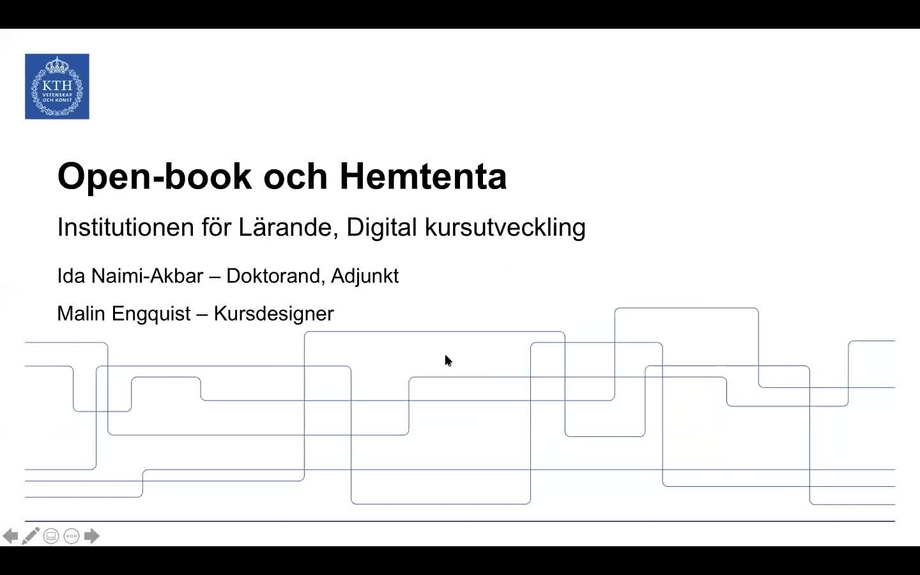Home exams
A home exam is a form of examination where the student is given one or more assignments to complete. A home exam can last for several days or a shorter period of time (hours). The examination is carried out without supervision. The examination assignment should be designed based on the fact that the student has access to course literature, materials, communication with classmates, etc.
Create a home exam
A home exam can include a large variety of different types of work. Reporting can take place in many different forms, for example as written text, a recording, an interactive website, a model building, etc. One way to choose the form of the assignment is to base it on how the students will use their knowledge in their future professional lives. Another way is to start from the intended learning outcomes.
Mathematics and home examination
If you have a calculation heavy exam that you wish to examine through home examination, it may be hard to determine if student submissions are unique, as student calculations can be expected to be similar. In general, it is easier to cheat on assignments that can be solved in one specific way (e.g. calculations and procedural tasks) than on assignments that require the students to describe their reasoning. A solution for calculation tasks can be to add questions or change the questions so that they give rise to more explanatory answers from the student. You can for example ask the students to, in their own words, explain what each part of the calculation does or contributes to in the solution. If assignments are submitted in Canvas, there is a plagiarism check which works well for using computer written text. You as a teacher can for exemple ask the students to submit the exam as a report where the calculations performed are included as inserted photographs of handwritten solutions. The student combines the text and images into a PDF. The text will then be checked for plagiarism and it will be clear when assessing whether the students have identical solutions and calculations.
Follow-up of home examination
A course is recommended to have at least one examining task where an identification check is done. If the course consists only of home examinations, one way of carrying out the identification check may be that it takes place upon submission (if the submission takes place physically and not via Canvas) or during a presentation of the task. Another good way for a larger task that the students work with for a long time is to arrange a follow-up meeting in the middle of the work. In order for feedback to benefit learning and students' development, the feedback loop needs to be able to close, and this is what happens if the student is also given the opportunity to develop his work from the received feedback. The teacher also gets insight into the student's work and can steer the work in the right direction and get an idea of, for example, the student's writing style, which can be an advantage when the work's legitimacy is to be determined.
An alternative way to work with feedback is to use peer review. Peer review in this context is a way to provide feedback, which the student can use to develop their work. For written work, Canvas offers support for the organization. Read more about peer review in Canvas here.
Another alternative, possible for written work, is that the student works in a document shared with the teacher so that the teacher can see how the student's work leads to the finished result. There are also documents where the teacher can track changes and quickly be presented with the work process, for example Word - track changes or Google drive - draftback.
There is no monitoring during the home exam , so it can be a recommended to supplement it with some form of oral examination. (see Follow-up oral examination to obstruct cheating ). More suggestions on how to design a home examination to counteract the risk of plagiarism can be found on the page Design written assignments .


